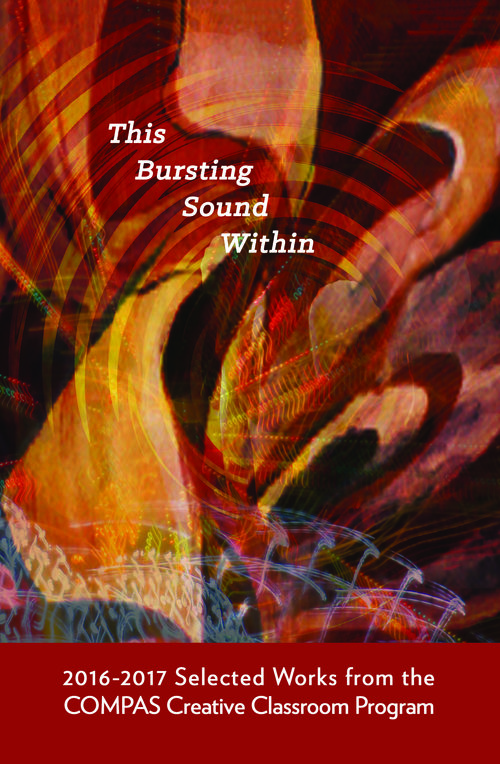15 December 2017
I recently finished editing the latest COMPAS Anthology of Student Writing—entitled This Bursting Sound Within. This is no less than the 38th (!) collection of the best student writing that COMPAS teaching artists discover each year across the state of Minnesota:
This past weekend was the official celebration of the book’s release, and St. Paul’s Landmark Center saw hundreds of people gather for the group reading. The setting was stunning, festivities joyous, and the young readers overwhelmingly brilliant. Folks who couldn’t be there will need to settle for this, my editor’s introduction to the book:
INTRODUCTION
For decades now, COMPAS has been sending the writers in its Creative Classroom Program out into the schools and communities of Minnesota. What began as a handful of poets in the late Sixties, working mostly in Twin Cities urban schools, has expanded into a thriving statewide network of songwriters, storymakers, playwrights, comedians, graphic novelists, spoken word artists, and beyond. The forms may change, but at the center of it all remain WORDS, and the ability—nay, the necessity—to communicate.
Who are we? Where did we come from? Where are we going? Why do people hate? fear? love? These are timeless questions—yet how often do we expect our children to voice them, let alone propose answers?
Out of all those classrooms, and all those clever exercises designed to move reluctant writers past barriers, COMPAS writers and artists selected the best for submission to this book. From that group, we have gone further, and selected the best of the best. The range of styles and topics is boggling. We get everything from the complexity and sophistication of Ekhlas Abdullahi and Nafiso Mohamed’s “Anchor,” to the pure joy of “Let’s Go Camping” by the energetic kindergartners of Mr. Crosby’s class. We get marvelous fantasy adventures (see virtually the entire section of “Diving into Adventure”), noble tirades against injustice (note especially the “Speaking Up/Speaking Out” section), and bold revelations and questions about the world.
Remember the last time you fled your homeland in fear and had to resettle in a new country where people spoke an unknown tongue? Me neither. But some of these students do, and the insights they provide are crucial. Just check “The Roots within Us” by Lay Lay and see if your perspective isn’t enlarged. Ivy Raya considers the impact of adoption in “Nameless”: “My name is who I am, but it has been changed throughout time. Does that mean that I have changed as well?” Hailey Dahl exposes feelings that many of us have in “Anxiety Poem”:
“It’s like a little creature
Sitting on your shoulder
Telling you you’re not worth anyone’s time
Or that everything you’re doing is wrong
You push people away before they get the chance to abandon you.”
Powerful stuff, that.
Equally powerful to me are those pieces that offer an almost prescient sense of time passing, never to be regained. My favorite in this vein is Eavan Bobbe’s poem “The Playground.” Replete with imagery and wistfulness, it serves as an epitaph to childhood.
Throughout these pieces, there is a sense that the young writers are often responding to an internal imperative to make their voices heard. It’s that entire concept of this is something that I can’t keep from saying that brought me the title of the book. Cristina Furness Rubio concludes her epic linguistic paeon to the Catalan language (“Tongue Waltz”) with the words:
“I am from this bursting sound within.”
That’s what fifth grader Henry Hilton had in mind, when he wrote:
“A whole page flowing out
Of my brain and onto the page.
A sea of thoughts expressed.
The weight of the world
On a piece of paper.”
Let the sea of thoughts heave and foam . . . rejoice that the bursting sound comes forth!
—Daniel Gabriel, Editor





